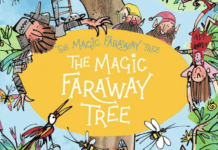American Film Market Reveals how to get Your Budget with Tax Incentives – Will French, Patrick Rizzotti, Ryan Broussard, Jeaneane Davey
AFM’s Tax Incentives panel as part of the Finance Conference
Will French is one of the most prominent tax credit finance specialists in the film industry and today he is moderating AFM’s Tax Incentives panel as part of the Finance Conference.
Will French
French was among the first brokers and financiers of film finance credits in the nation, beginning in 2003 with the first of his kind, Louisiana Transferable Tax Credit Program.
Through his network of operating companies, Will has personally traded or financed more than $500 million of state film credits for more than 250 projects. From 2014 to 2017, he served as Managing Director of State Tax Credits for Enhanced Capital, a diversified national asset management specializing in complex credits.
In 2018, he joined a small startup called the Forest Road Company, which he helped grow into the largest non bank financier of tax credits in the United States, which ultimately purchased the market leading three Point Capital in 2021.
Will left Forest Road and joined Brook Financial Services, the largest trader of tax, state tax credits in the country where he leads the company’s film finance, tax credit administration and tax credit consulting
Today’s conversation shares great information about how to navigate tax incentives all over the world, both U. S. and international.
We’re going to do a little bit of a primer on tax credits, tax incentives, how they work. Will and his panelists give a background on some terminology to help follow along.
Jeaneane Davey
Janine is the second most senior person at Netflix. She oversees a team of 28 people in three offices around the world, making it the largest tax incentive office for any studio or streaming, company.
Janine knows everything there is to know about all of these incentive programs and will lead the conversation when talking about overseas: France, Italy and more.
Ryan Broussard
Ryan Broussard, with Wrapbook, has 16 years of incentives experience. Wrapbook is bringing production, accounting and payroll services, all together in one good technological platform. Payroll and accounting is the basis of tax incentives. If you don’t do your payroll right and your accounting you get no incentive.
Patrick Rizzotti
Patrick Rizzotti is with Blue Fox Financing. Patrick take projects for independent producers, packages them all together, and brings them to the various lenders and equity investors
Patrick brings knowledge of the incentive side and production reality. State with great tax rebate great programs, transferable tax credit, what’s the actual filing experiences, production crews.
We’ll start with the introduction to tax credits, then deep dive into 8 U.S. jurisdictions, then shift over to international jurisdictions.
Guest presenter Danielle Jackson from Above Line Media Services in Canada will tell us about how the Canadian system works, because it really is very fundamentally different than the U.S.
Introduction to tax credits
Soft money is an incentive that a government gives to encourage film production in the given jurisdiction.
All of the tax incentives that we’ll be talking about are a form of soft money.
If you’re in the tax incentive business, you’re in the problem solving business because these things are complex in each jurisdiction, each state, each country. They have their own rules. Sometimes they have their own languages.
You have to decipher how this program is going to work when you’ve never gone in and worked in it before. Then your production and your company have different tax circumstances. It gets very challenging with all those laws, rules, regulations, policies. All constantly changing.
Different types of tax credits
Rebates and grants
We’ve got several different types of tax credits. The first is rebates and grants. This is basically as close as it gets to cash. You spend money in a jurisdiction, the state will give you a cash grant or a cash rebate. You’ll know exactly how much you’re going to get.
Refundable tax credits
This is a tax credit where you get back the difference in the value of the tax credit versus whatever taxes you paid over the state. Assuming that you don’t have any tax liability, as most production companies are set up not to have tax liability. They spend money. They don’t earn money and pay taxes, at the production level. In most cases, then you get back the difference in the value of the tax credit versus whatever taxes you did over the state.
Transferable tax credits
Where the state gives you tax credit. If you can’t use it, you can sell it to somebody else who can use it. So there is an active market around the U. S. for transferable tax credits.
Taxpayers in states like Georgia find film producers who’ve shot a film, earned a tax credit, that they can buy. You’re going to have to sell it for less than the face value of the tax credit. Close to 80-85 cents on the dollar.
You have to factor sales and discounts into your equation for what the net benefit of the tax incentive is to you.
Redeemable tax credits
Redeemable tax credits are redeemed by the actual state. Louisiana is a good example of this. If you get a million dollars worth of tax credits in Louisiana, the state buys the credits back for 90 cents on the dollar. You pay the state a 2% fee, you end up with 88 cents on the dollar.
Non-Refundable, Non-Transferable tax credits
You have to have a tax liability if you’re going to use this tax credit. If you owe no taxes to the state, this is worth nothing to you. If you owe a million dollars to the state and you get a million dollar tax credit, you can self utilize that.
Audits and AUPs (Agreed Upon Procedures)
If you want a tax credit in most jurisdictions, you have to have an audit done to prove that you spent the money in the jurisdiction. Show that it cleared your bank, that you had a receipt for it.
An audit can be a very long process and is a term of art within the accounting industry.
AUP or the “agreed upon procedures” process where a state will say they’re not going to require a full audit by a CPA. Instead of reviewing the full account, maybe they review the top 50 transactions to make sure they all were valid and cleared the bank. Then maybe the top 10 payroll transactions and go through all the bank reconciliations.
The term AUP. or spotting be an audit a lot of times interchangeably, but they do have slightly different meetings.
Qualified spend.
Every jurisdiction has a different definition of qualified spend. Some jurisdictions, if you bring in somebody from out of the state, like an actor, that’s not “qualified”. So they’re not going to give you any tax credits for that.
A lot of the art and the science in tax incentives is knowing exactly what qualifies. When you’re putting your budget together – 100 – 2000 pages long – you have to tag each account item as to whether or not, in this state, in this jurisdiction where the qualified spend or not.
Base rates and uplifts
The base rate is the rate at which the jurisdiction offers a tax credit for just the standard production coming in.
But most jurisdictions encourage you to do other things.
Maybe they want you to film outside of the major metropolitan areas. Maybe they want you to film in the rural jurisdictions. Maybe they want you to do VFX in their state and support their local VFX facilities.
There’s lots of different breakdowns of “uplifts”. The rate may start at 20%, but you can get it up to 40 percent back with all the various uplifts.
Caps
There are a couple of different types of caps that are important. Per project cap. What’s the max that you can get for your project?How much does the state have to deal with throughout that particular year? How much can they spend on this program?
That’s meaningful because if you want to go and shoot there, we know how much you’re gonna get? You need to know if the state is out of money.
Georgia’s Tax Rebate Program
Georgia offers a 30% transferable tax credit. 20% of that credit is called the production credit. You get it just for filming in the state. 10% uplift if you actually distribute that film.
So if you just make the film and it never gets sold, it never gets distributed 20%. If it streams or appears in theaters in more than one market, multi market distribution, you get an extra 10%.
Georgia really wants your project to get distribution. They want their magic peach in the end credits to be seen by as many people as possible.
Of course they’re encouraging people to come and tour Georgia.
It’s the largest program in the country right now, issuing probably more than a billion dollars worth of tax credits every year.
Georgia used to be all about the honor system. You went in, you shot, you filed a tax return, you claimed a credit, you sold the credit, and that was it. Now, it’s one of the most regulated programs and has one of the most challenging audit processes where everything has to be done just perfectly
Ryan Broussard explains Georgia’s Tax incentive
What is the best tax credit to go after? You might say it’s Georgia. 30% rebate on here. No project cap, no annual cap. I always tell people it really matters on the type of project. This is really a great appetite for a Marvel or giant studios. They can make big movies.
But, is it the best place for your six million dollar movie? Is there a crew base for smaller movies when you’re surrounded by much bigger productions? As a result, it may not be a true 30% It’s based on what you spend in the state, so if you need to bring in crew from another state, that spend doesn’t count.
Then you have to discount it for the fact that you have to sell it in the open market.
Netflix’s experience in Georgia
Jeaneane Davey: In general, it’s a great program. Very robust. With Netflix specifically or any streamer, something to keep in mind if you’re making a project that’s destined for one of these streamers.
Some of these 10% uplift options are not going to be viable.
Part of this “G.E.P.” The P stands for promotion. There’s different logo placements that you can select for the Georgia peach [in the end credits]. If some of them come too late in the end credit rule, they likely will be auto skipped over.
When you’re watching any streaming service, you get maybe four seconds of the end credits before the next episode begins. Just be aware that logo placement may loose you credits.
Patrick Rizzotti’s experience in Georgia
I reached to a bunch of producers that have shot there in the last year, including we shot in Atlanta.
It is extremely helpful to have a local UPM or line producer that has their own crew relationships. A number of productions in the lower tier, $3 – 5 million range, it was very common to be in prep and or production and have crew leave consistently in Atlanta for bigger shows that were coming through.
So what started off as a great tax incentive started to get dwindled down because they had to bring in non local crew and it just became difficult and challenging in order to get through production.
If you bring in key crew members locally, as many as you can and a UPM, they’re more apt to stay on the show because they want to get that call from that person on the next job.
We had a show with [a dedicated] crew and we brought in the EP of that show and not one person left. It was a smaller budgeted film. But everyone stayed because they, the relationships, were there to allow it.
Another city that’s very popular in shooting is Savannah. They have typically 3-4 crews deep. They have a lot of fantastic locations down there. it’s cheaper across the board.
So if you’re going into Atlanta and or Savannah, talk with the film commission, specifically what (other shows) are gearing up or what’s in production. I think it’s extremely important to look ahead to make sure that there’s [resources available.]
Do jurisdictions look for proof of financing?
Georgia is they’re shifting the way that the applications are approved now to require you to prove that you have your financing.
For an independent film, that’s tricky. It usually means you need an application approved in Georgia to go to your lending bank to show eligibility to receive tax credits for the bank to give you the loan so that your project can go forward.
These application approvals in Georgia, where they just want to know that you’re not wasting their time and that you are going to go forward. Showing loan documents, equity documents.
More and more states ask to see proof of financing, especially for states that do have an annual cap.
New Jersey’s Tax Rebate Program
New Jersey will soon have a max 39% rebate. If you are within 30 miles of Metropolitan New York City, it’s a 30% credit. If you’re out beyond 30 miles, you can get a 35% credit that also applies to your payroll. There’s a little uplift for diversity. If you make good faith efforts to hire a diverse group of cast, crew and vendors and keep reliable accounting to prove it, you can get an extra 2%.
There a $100 million annual budget to work with.
It became very popular in 2023 when New York was having problems and everybody wanted to pull their New York projects, send them over to New Jersey.
New Jersey’s program is still growing and getting stronger. Their policies are being put in place now, and they’re changing a little bit, which is a little disruptive, but that’s part of a normal incentive process.
Legislation is passed, people start coming in and working within it.
Ryan Broussard shares on New Jersey’s Tax incentive
New Jersey used to have a really good credit over a decade ago. I’m really happy that it came back a couple of years ago.
Some U. S. states like Illinois and California, have a diversity requirement where they want you to put your best foot forward. New Jersey actually goes the extra step and rewards you. Women, minorities, people of color, everybody, as long as you hit a certain percentage, you can get rewarded.
Do your homework and research these things, because New Jersey, for example, has a transfer fee, issuance fee, certain withholdings on loan outs. Be aware of these things before you go to a state.
Jeaneane Davey on New Jersey
What’s changed is that there used to be a special rule just around the expenditures, non-labor, but now it’s gonna be 30%. If you’re not a film partner, 30% for everything inside this 30 mile radius, 35% for everything outside of that 30 mile radius.
So no more differentiation between the labor.
Essentially you have to make pretty big commitments in the state in terms of building a facility, and that is something that Netflix is doing. We’re converting a decommissioned, military base Into a pretty expansive stage and more. It’s not applicable to an independent production
Will French asks, “Have you had any problems selling your New Jersey tax credits? Is there a good market for them?”
Jeaneane Davey “There is a good market. Georgia is one of the more variable markets compared to all of the other transferable jurisdictions. New Jersey so far has been pretty consistent and favorable, but I think we’ve seen the most volatility over time in Georgia where, we can have several points swing in the space of a couple of years.”
Patrick Rizzotti’s experience in New Jersey
The consensus was all positive. One thing that’s extremely important from an independent film standpoint is pulling crew from New York City, and having them commute back and forth is a massive advantage, versus having to shoot in New York City.
The cost comparison for shooting the same film in New York City versus shooting it in Jersey, There is no comparison, frankly, it’s a lot cheaper across the board. From locations, to crew, housing, all the way down. It’s very effective and I think that’s why it’s frankly taken off. A lot of talent lives in New York City. We just prepped a movie that has a pretty big A list talent and he loves the fact that he can commute from New York to Jersey back every day without us having to put them up in Jersey.
Will French continues
In Georgia, after showing your proof of funding, you get that approved application within 7 to 14 days. In New Jersey, that process can take 3 to 5 months.
You’re an independent producer, you’re putting your financing together, you’re going to be way better off if you start that application a long way out, give it time to get processed, get it approved, get your credits reserved from their cap.
That’s what they do, they reserve it, and then you’re capped at whatever that reservation is.
Start that process very early.
New Jersey’s tax treaty with Pennsylvania
New Jersey and Pennsylvania have a reciprocity agreement, which basically acknowledges that there are folks that live in New Jersey that work in Pennsylvania and vice versa. These agreements are put into place to acknowledge and recognize that there is going to be cross border movement of their residents. so it’s a very interesting outcome. I don’t think it was intended. Pennsylvania residents will be discriminated against from being hired on productions in New Jersey because they are literally the only type of labor that would not qualify at this point in time.
Louisiana’s Tax Rebate Program
Louisiana has a 40% redeemable tax credit. You sell it back to the state, you net 88 cents on the dollar. There are some caps: $150 million issuance cap each year, $180 million claim cap.
Louisiana first capped their system in 2015. They had so many projects in the pipeline, they had to restrict activity both incoming and outgoing.
Louisiana was the national leader for almost 12 years before the state started to pull back. When Louisiana pulled back, Georgia doubled down. That’s why Georgia is the national leader these days.
Ryan Broussard on Louisiana
They have an above the line cap. If your production is real top heavy. On a $6 million budget, $5 million is on the page, then, Louisiana may not be the best place for you. The state wants you to hire residents for the below the line for your crew. You’re spending all your money on above the line talent. It’s obvious to them.
A $3 million dollar compensation cap for loan outs. You’ll start seeing this more and more. States are recognizing that they want more money to go to those people working day in and day out. They are usually residents and making good and other interesting things in Louisiana. It’s partially refundable.
There’s a 2% access fee to get that 2%, which is a net 88. But so many Louisiana budgets I get do not put that 2% as a line item. You pay that 2% first. Before you get the whole amount back with the 90.
That means if you’re getting back $5 million and you have to pay 2% on that $5 million, you’ve got to have the cash flow to do that.
Louisiana gives 15% for residents. They are very deep in Louisiana with crew. There’s a lot of TV there, a lot of great experienced crew.
Jeaneane Davey on Louisiana
One other thing I’ll just add, you actually have a pretty generous window in which to qualify spend. If you had to shut down for various reasons, two years plus six month deadline to finalize your audit and get it into the state.
They’re the only state that has that big of a window to apply where you go. That’s something most states do not allow for.
New Mexico
New Mexico was the very first program, even before Louisiana.
Currently $110 million a year available. That goes up by $10 million a year until fiscal year 2028. Max 40% refundable tax credit. You get your money back directly from the state.
Is there a qualified production facility situation in New Mexico?
Jeaneane Davey
Like New Jersey, Netflix also has a facility in New Mexico, ABQ Studios, that is a qualified production facility and there is an uplift that’s available for shooting at a qualified production facility.
Ryan Broussard:
I’ve done a lot of productions in New Mexico in the past. There are some unique things about New Mexico you should always be aware of. Be wary of your non-resident, above the line.
So out of your actors, producers, directors, only your actors will qualify.
If you’re directly paying them through the payroll company, they have to have a certain withholding. If they’re a loan out, which most of your actors will be, they have to pay gross receipt tax. This gets really funky, and you have to put this in your budget. This doesn’t come from the actor’s income, like income tax does. This is an additional gross receipts tax that the production will need to budget for and pay. It’ll change based on where the production office is at, based on zip code, anywhere from 7% to almost 13%,
Patrick Rizzotti on New Mexico
There’s a lot of big shows that are there. Thinking of independent filmmaking, if you’re in a tier zero movie, you’re at $5 million or less, you got to be very careful on going into Albuquerque and thinking that you’re going to crew up locally. A lot of times there isn’t crew available. Frankly, there’s not a lot of crew outside of Albuquerque locally. If you bring in crew, you’re losing the tax advantage
New York City
Great program. No per project cap. You get a 10 percent uplift for being Upstate Almost double from $400 to $700 million dollars a year but that’s new. Why? It’s because it was taking almost five years to get your refund out of the state of New York. When you’re borrowing against the value of your credit, that’s five years of interest that you have to pay, right? Huge deal, which is why New Jersey did so well this year when it revamped its program and started pulling people out of New York because people were tired of waiting that long.
With $700 million. How fast is New York going to go now?
Broussard on New York
On paper, New York has always been a great program. It’s fully refundable. There are some hoops to jump through with the fact that it’s fully refundable and you have to do certain tax filings at certain tax times, but they have made some changes.
Jeaneane Davey on New York
One of the great features of New York, apart from obviously the limitations and above the line, it has always incentivized residents and non residents below the line equally, which is nice.
There’s limitations on hotel rooms, but otherwise the actual underlying compensation is treated the same. There is a totally separate program if you’re doing post production only or VFX only, and they each have their own separate thresholds. But if you’re already doing production in New York and you’ve met all these other thresholds that are required, you can tack on any amount of post and VFX that you also carry.
We saw a bunch of projects doing shooting in New Jersey and post in New York. Yeah, that was pretty popular. Very smart utilization of two programs. Not many
Patrick Rizzotti on New York City
I would just say, having shot in New York City a two and a half million dollar all union film, and then shooting roughly the same budget in upstate New York in Buffalo, it was like going to a completely different country. It was unbelievable. It was probably 30 percent cheaper across the board on everything in Buffalo versus New York City.
We actually doubled a bunch of locations in Buffalo for New York City. I’m a massive fan of Western New York. I think that it’s totally underrated, in New York right now
There is the additional 10% bump. There’s multiple crews. When we did our film, there was a $50 million movie being shot at the same time, and we had no issues with local crew at all.
Lastly, on Buffalo, the film commissioners out there, offices are amazing facilities for you to use, and there is a lot of information they can share.
Buffalo and Erie County in particular goes up and beyond anyone else I’ve ever seen. They literally will pick you up at the airport, take you on a 3- day location scout for free, and even will put you up at hotels for free. Including we had dinner with the mayor a week ago, just as we’re getting ready to shoot this $5 million movie.
If you obviously it has to be New York City, then you navigate through that accordingly. But certainly look into Western New York as a great way to shoot New York and take advantage of the tax credits for a less amount.
Jeaneane Davey on New York State
New York sales tax exemption would apply to most of your production expenditures.
There’s a couple things that aren’t covered mostly related to transportation. You can import a certain amount of spend from out of state and use it in New York. There’s only certain types of expenses that must be provided by vendors registered for New York sales tax in order for them to be eligible.
Illinois
Illinois has no annual cap, 45%, 15 % bump is for filming.
The Illinois program didn’t used to allow the above the line cost to qualify. So a lot of commercials were done there. Now, up to nine above the line positions can qualify with 2-4 actors, depending on the project’s size.
Illinois is an up and comer. The state is trying to incentivize virtual production companies to move there and invest in the local infrastructure, which is a brand new way of flipping production on its head.
North Carolina
Only 25% and only $31 million dollars a year available for it to be used, but it is cash that comes back to you.
Mississippi
Rizzotti: Having shot three films there, it’s amazing. All the cities we went to are welcoming. The tax incentive is fantastic. Crews are fantastic. The audit process in Mississippi is very unique and very extensive so it is essential to find an accountant to do it properly so it doesn’t delay the tax credit.
Oregon
Jeaneane Davey: It’s another cash rebate program. If you’re in the stop motion industry specifically there’s a very robust stop motion industry in Portland.
There’s something to be said about these smaller states that just don’t get a lot of attention. They will roll out the red carpet for you, pick you up from the airport, pick apart your budget.
They want you there, because they’re not New York City or New Orleans, or anything.
Canada
Danielle Jackson from Above The Line Media Services joins the panel.
Danielle’s company provides consulting services for Canadian productions.
I’m going to give you a little bit of a rundown on the Canadian tax credit system. So there are two main types of tax credits, production services and Canadian contact. They’re both administered at both the federal and provincial level. We’ll start with the production services tax credit.
The federal portion is 16% of labor paid to Canadian citizens. They don’t actually have to be a resident of Canada, they just have to be a citizen. There’s lots of great Canadian talent that works here and there’s no cap on the amount that can be paid. It’s fully refundable. The production company gets the money back, whether or not they owe any taxes. In addition to the federal credit, there’s a provincial credit, so each province or territory has its own credit. The rate varies based on the province and whether it’s, based on labor or production costs.
There are also additional uplifts for filming outside of the main metropolitan area and also for post production and VFX.
There are some eligibility requirements for this tax credit. It needs to be either a Canadian owned company or a non Canadian company with a permanent establishment in Canada. The budget has to be at least a million Canadian dollars. That’s Canadian dollars. That’s about $720, 000 USD.
There are some excluded genres: talk shows, game shows, award shows, reality shows. but it does give you more freedom and flexibility than the Canadian Content Tax Credit.
The federal tax credit for Canadian content is 25% on Canadian labor. Also they don’t have to be a resident. That’s capped at 60% of your labor cost. Fully refundable. Each province or territory also has an additional tax credit. They all offer outlets for and then there’s a few other ones that are, filming outside of the Metropolitan Zone, post and VFX.
This one has more limitations. The production company has to be Canadian-owned. There has to be a Canadian producer that has financial and creative control. There’s a minimum number of Canadians that you have to hire to fill key creative positions. But it is a point system, so there’s lots of room.
There’s a little bit of room to hire non Canadians in key creative positions. So either the director or the writer has to be Canadian. One of the two leads has to be Canadian.
So you have to spend a minimum of 75% of your budget in Canada, and it has to be shown in Canada within two years of. So although there are some more limitations with this one, it is a very generous tax credit.
A lot of non Canadians have found ways to partner with Canadian producers to make Canadian content productions. But if you’re looking for more freedom and flexibility, then production services is going to be the way.
Where, such as Alberta, where it’s based on within that program, what would be a typical return?
If I spent a million dollars, pick any number that makes sense to you, what am I really going to get back if I go to one of these more established programs?
Between 30 – 40% percent would be the average range.
Okay. Janine, do you want to talk about your experiences with Canadian productions?
Jeaneane Davey on Canadian Tax Rebates
I’ll touch on visual effects only.
Something that’s really nice about Canada is that a lot of the provinces have special uplifts dedicated to visual effects and animation.
Because there’s really no minimum spend in the provinces themselves, it’s really more of a global budget minimum spend. You can pretty much access it even on very small dollar contracts. There are fees to keep in mind in terms of What your net ROI really is going to be.
But if you had a significant VFX contract that you just wanted to send to a vendor in Montreal, you could easily get 40% back in terms of the return.
It’s a great place to do visual effects and animation specifically.
Australia, New Zealand, the UK
With Australia, it’s important to know that there are three separate and distinct federal level programs.
They all operate as the term of art they use as an offset, what they really mean is a refundable tax credit.
There is a 10% rate differential there. So you have the producer offset, which is really for significant Australian content. So this is more like your Australian local production. It doesn’t necessarily have to be local, but you need a lot of Australian personnel and other elements working on it.
If you just have an inbound production, you want to use Australia as a shooting location, but don’t necessarily have an Australian story. That’s where your location offset will come in. It’s at 16.5%, which isn’t necessarily very competitive when you’ve seen all the other rates that we’ve had up on the board today. But that is changing to Australia’s credit, they realized that this really wasn’t competitive anymore, so it will be increasing to 30%.
You can get a 30% on basically all your VFX vendor spend or post house spend.
New Zealand
So for international productions, you have a base rate of 20%.
United Kingdom
The UK has a very robust program. 34% for live action, 39% for animation and kids content.
You need to think about what the true effective rate is versus what you might see advertised. with the UK, it’s very generously-used and consumed. That basically means whatever you do in the UK, to oversimplify is going to qualify. So that includes residents, non residents, nny spend that you import but use in production in the UK, that can all be eligible.
The UK program requires that the UK lead production entity be in charge of the entire production from start to finish.
Does that mean it can’t subcontract? No, of course it can subcontract, but it needs to be the top dog or the mothership of the entire production process. Post only is definitely a possibility in the UK.

















![Get Your Indie Movie Made (Responsibly): Jeff Caruso of Wrapbook Leads the AFM 2025 Film Finance Conversation [Exclusive Interview] American Film Market](https://dailyovation.com/wp-content/uploads/2025/11/AmericanFilmMarket2025-1-218x150.jpg)














